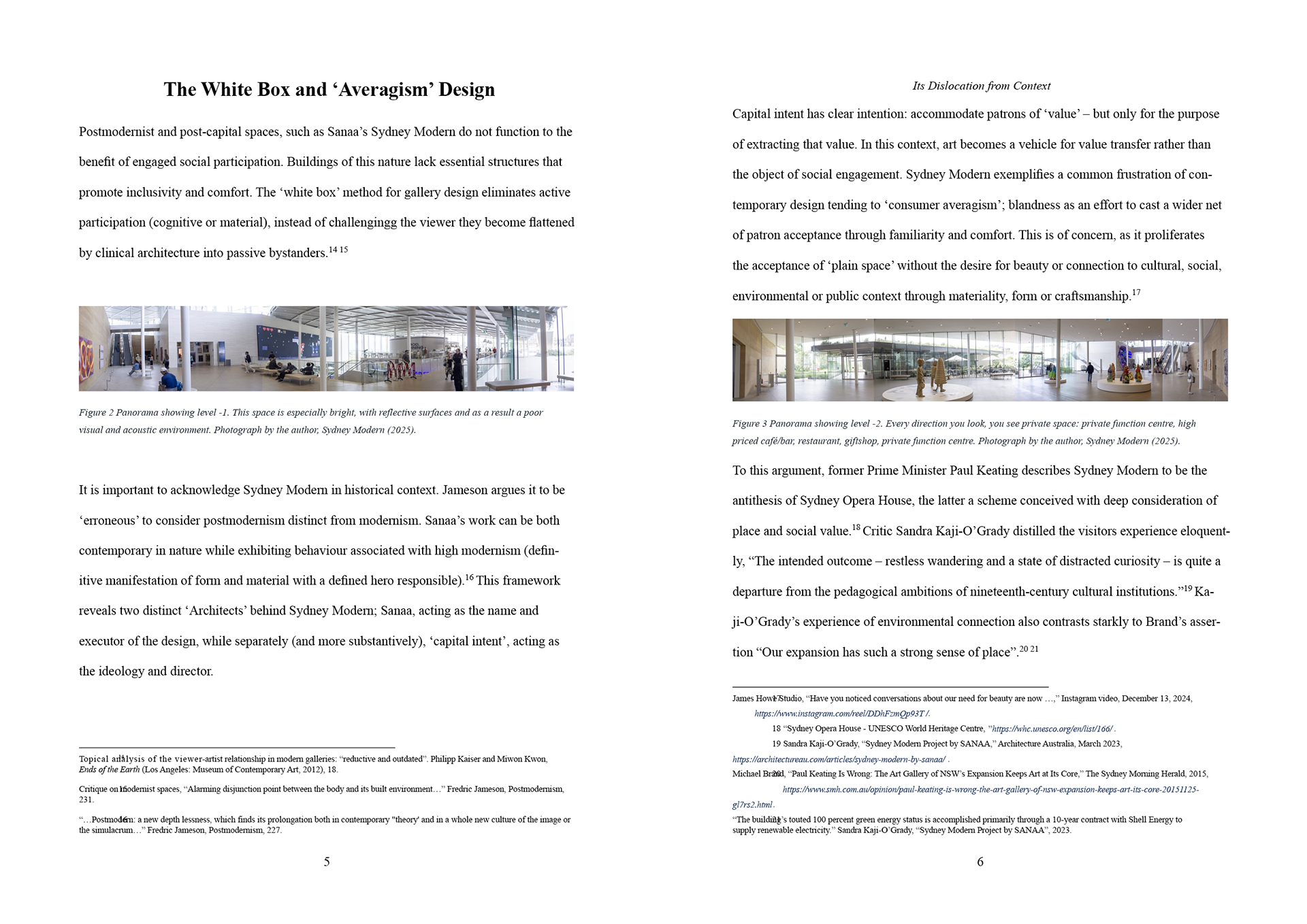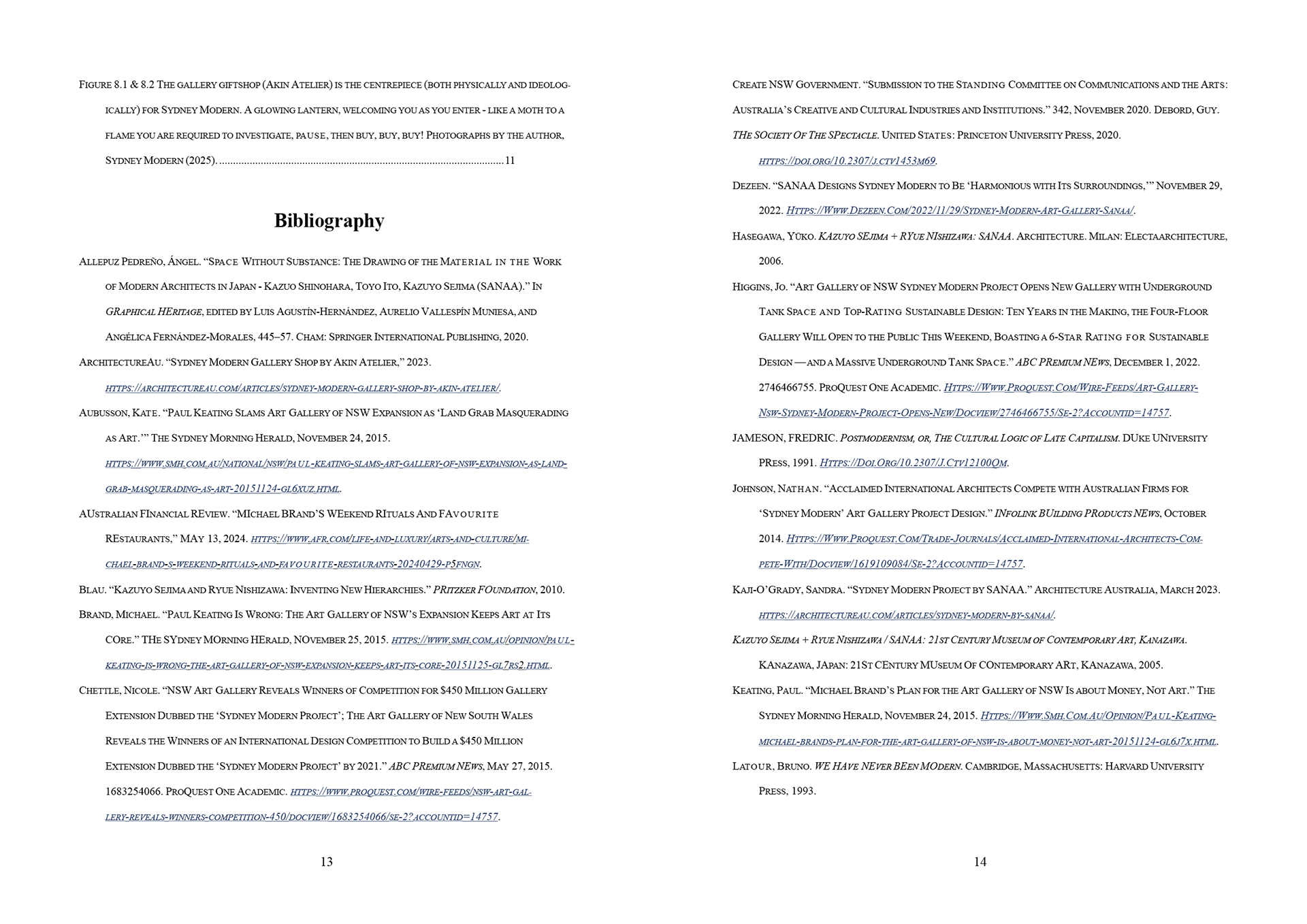









The design of public space, and definition of public space for that matter, has changed substantially throughout history. This occurs as a reflection of hanging social attitudes or a reaction to context. Herein it is argued that the existing wing of The Art Gallery of NSW, and the new Sydney Modern wing share a geographical site, but do not share a program (or values) – contrary to their official naming and public expectation. The new gallery acts not as a space to exhibit art, but rather as an extension of consumer space, and as Sandra Kaji-O’Grady describes more related in nature to a Westfield shopping centre than the adjacent gallery building. Upon conception, Sydney Modern was heralded as a “transformative cultural space”, yet its design and spatial logic suggest cowardice over transformation, and underline a departure from cultural placemaking, and by implication, alignment with late capitalist consumer spaces rather than a socially engaged public institution.









